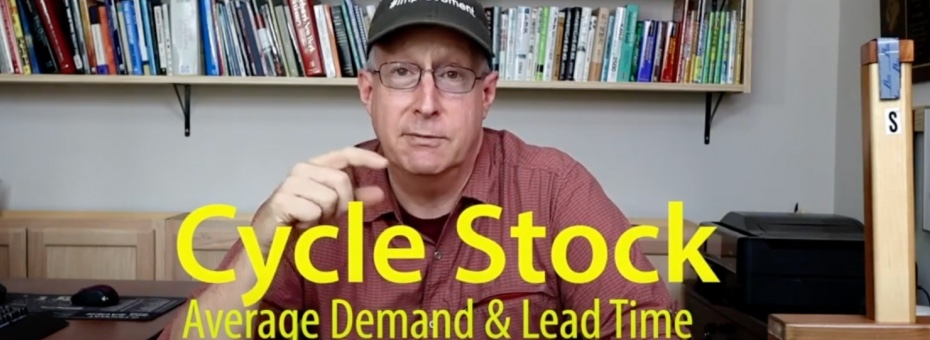Part three of eight. Watch the others:
- Part one, A Focus on Muda
- Part two, Overproduction
- Part four, Excess Conveyance
- Part five, Motion
- Part six, Waiting
- Part seven, Defects
- Part eight, Processing
Hi everyone. This is Art Smalley, President of Art of Lean, Incorporated. Today, on behalf of the Lean Enterprise Institute, we’re going to do a series of short video clips–each one about the seven classic forms of waste from the Toyota Production System. Stick around. I think you’ll enjoy them.
Waste No. 2: What happens when you overproduce or produce too early? Well, you get lots of inventory, that’s for sure. And we can break this up into types and categories. Some of it is finished good inventory. Some of it is work in process that we’ve created. Some of it is work in process that we’ve purchased from suppliers, for example. Some of this is the raw material that we need to make our materials internally. You can’t make something from nothing, right? You have to have raw materials in order to make your work in process and have to have work in process to make finished goods. And you need to finish goods to deliver on time to the customer to get paid.
So how do you decide what’s work and what’s waste in an example like this?
Well, beyond this short example, it would take a lot more math and specifics, but in general, we can say we have categories of inventory in Toyota. Okay? The first category is cycle stock; that’s the minimum amount required to run the process. Mathematically, you can’t do with any less. For any given production interval, you need this much inventory to run it.
Beyond that is buffer. Every process has some variation in it, could be downtime, could be scrap, could be something else. But to mitigate that variation, you might carry a little buffer inventory.
And beyond that, we have a third type called safety stock. Safety stock is when something unanticipated occurs, like a snowstorm or something like that in the winter, or some type of outage machine downtime or something like that.
You don’t plan for every contingency. For example, there’s no inventory plan in this Covid-19 situation. You can’t just-in-case everything, or you’ll go broke. It’d be the opposite of a just-in-time and responsive environment. Sometimes you have to adapt and respond. But in inventory, we think about cycle, buffer, and safety, and we take some risks. We don’t know and can’t plan for everything that’s going to occur. You use mathematical averages, okay? You use some safety stock calculations, buffer stock calculations, and cycle stock calculations and say, that’s what’s required to run the process.
The cycle stock would be the value-add or necessary inventory to run it. You can think of the buffer and safety stock as incidental. It’s not value-add, but I might need it to run the process in its current state of uptime and quality, and supplier delivery reliability–to have the optimal daily output.
But then usually, there’s inventory beyond that. When you do the numbers and crunch the math, beyond cycle, buffer, and safety, almost always, out of the weeds, comes more. In the warehouse, in the rafters, over there in boxes, things that come out, and when you measure it, you wind up with days, weeks, or months more than you thought you might’ve had in some egregious cases. And that becomes what we call waste.
And again, you’re paying for that in some form or other. You’ve purchased it too early in many cases, and you’re sitting on it. Or when you hold it, you run the risk of damaging it. It could go obsolete. The roof could leak and cause water damage. Material handling might have to move it around to create space, and they damage it when they move it around, potentially. Or it gets lost, so you reorder more. A lot of strange things happen when you have too much inventory. It leads to adding cost and value that the customer doesn’t desire and drives further inefficiencies.
Our factories are areas of control, so you want to minimize inventory to the extent necessary, mathematically, using that cycle, buffer, and safety stock analogy, and not have anything beyond that. Beyond that would be a form of waste.
Observation Skills
Learn to observe and understand work processes at the level of detail required to improve them.






